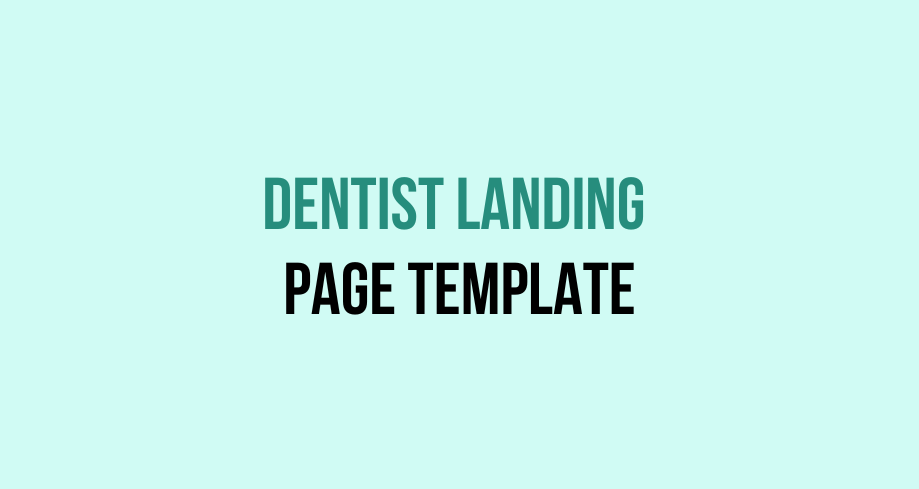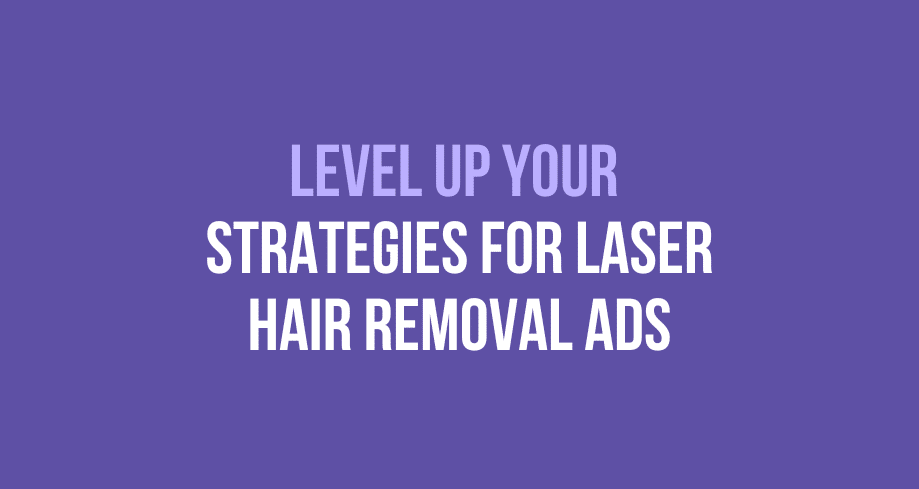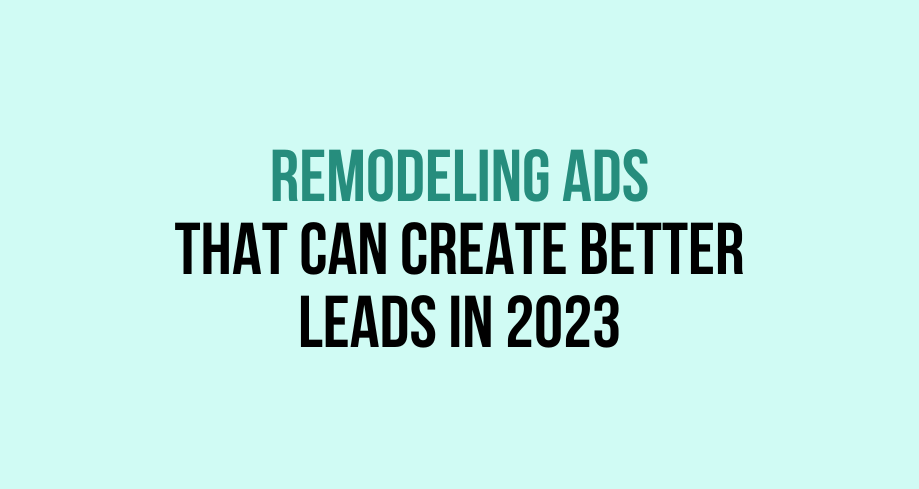Are you a dentist looking for the perfect landing page template to help your practice stand out from the competition? Look no further!
We have compiled some of the best dentist landing page templates available today. These templates are designed with dentists in mind and come loaded with all sorts of features to help you create an effective online presence.
From easy drag-and-drop customizations to eye-catching visuals and animations, these templates will make showcasing your services and attracting new patients easier. With one of our dental clinic landing page templates, you can easily create a professional website that will make a lasting impression on potential clients.
So what are you waiting for? Get started now!
What is a Landing Page?
A landing page is a web page that serves as an entry point for visitors to a website. It is often used to capture information from visitors, such as contact information or the source of traffic. Landing pages are typically designed to convert visitors into customers or generate leads.
Typically, landing pages are created specifically for an advertisement or marketing campaign with a specific call-to-action (CTA) in mind. This CTA might be signing up for a newsletter, downloading a white paper, filling out a form to access an ebook, or registering for an upcoming webinar.
The CTA should be the focus of the design and content of the landing page so that visitors can quickly locate and follow through on it without being distracted by other elements of the page.
What is a Dental Landing Page?
A dental landing page is an online tool dentists use to gather information about their patients and clients. It is a web page where people can quickly learn more about a particular dentist’s services.
Its purpose is to provide potential customers with detailed information about the dentist and what they offer regarding treatments, pricing, and availability.
Why Create Dental Landing Pages?
Dental landing pages are designed to be user-friendly and easy to navigate, so potential customers can quickly find what they need.
- They typically include information such as the dentist’s profile, contact details, pictures or videos of the dentist clinic practice, client testimonials, a list of available treatments, payment options, links to social media accounts, and news related to the practice.
- The page should also contain a call-to-action button that allows visitors to make an appointment directly from the website.
- The main goal of having a dental landing page is for dental services to gain more exposure for their business and attract new clients.
- With this type of web page, dentists can increase their online presence and reach more people who may be interested in their services.
- Plus, it makes it easier for those searching for a particular dentist or service to find them online.
- This helps reduce phone calls which take time away from other essential tasks like seeing patients and delivering quality care.
What’s the Difference Between a Landing Page and a Website?
A landing page and a website are tools businesses use to communicate with their target audience online. The main difference between a medical landing page and a website is the purpose of each one.
Websites
- A website is generally used as an all-encompassing platform to showcase a business’s brand, services, and products. It typically consists of multiple pages that contain detailed information on the company, its mission, goals, services, and products.
- In terms of structure, websites have multiple pages set up in an organized hierarchy that helps users find the information they’re looking for quickly and easily.
- Generally, websites provide more information about the brand.
- When it comes to web design elements, websites tend to feature more complex layouts compared to landing pages due to their higher content requirements.
Landing Pages
- On the other hand, a landing page is designed with just one specific goal in mind—to convert visitors into leads or customers. As such, it usually contains less content than what would be found on a website; instead, it focuses on providing just enough information to convince visitors to take action.
- Landing pages can also be structured but often have just one long scrolling page with images, brief descriptions, and various calls to action that guide users toward taking the desired action.
- Landing pages focus more on individual campaigns or promotions.
- Landing pages don’t need navigation menus since they are designed with only one goal—conversion—so they feature fewer design elements like buttons, images, and copywriting elements that help direct traffic toward taking action.
What’s the Difference Between a Homepage and a Landing Page?
A homepage and a landing page are two distinct types of web pages.
Homepages
- Homepages serve as the entry point to a website, providing visitors with an overview of the company or organization and links to other areas on the site.
- When designing a homepage, its primary purpose is to introduce the company or organization and direct people to relevant information on its site.
- It should also include contact information, a brief description of what they offer, and links to important pages on their website.
- Homepages often feature decorative elements such as images and videos that portray the company’s mission in a visually appealing way.
- Most home pages have links to sign up for newsletters or connect through social media accounts.
Landing Pages
- On the other hand, landing pages are created for different marketing purposes, such as lead generation, product sales, and event registrations.
- Unlike homepages, landing pages are designed with a single goal: getting visitors to take action, like subscribing to a newsletter or making a purchase.
- Landing pages typically feature minimal content that focuses on one specific item or product being marketed by the business.
- They may include promotional offers such as discount codes or free trials and often have a call-to-action button guiding visitors to complete their desired action.
- Landing pages also tend to include more complex forms than those found on homepages since they require more information from users to generate leads or sales conversions effectively.
How Do Landing Pages Work?
A landing page is a web page that helps market a product or service and increase conversions.
- It is designed to capture leads who are interested in the promoted offer and allow businesses to generate more sales or leads with minimal effort.
- Landing pages are used by companies of all sizes, from small startups to large corporations.
- The purpose of a landing page is to provide visitors with an immediate opportunity to take action – such as signing up for an email list, downloading a free guide, making a purchase, etc.
- A well-designed landing page should include relevant visuals, enticing headlines, and compelling call-to-actions (CTAs) encouraging visitors to take action.
Setting Up a Landing Page
When setting up a new landing page, the first step is to decide the page’s goal, whether it’s for lead acquisition, sales generation, or something else entirely.
- Create a goal: Once you have established your goal, you can begin building your landing page with the necessary elements that will help you achieve this goal.
- Include relevant elements: These elements typically include headlines, subheadings, images, and videos; copywriting that encourages people to take action (CTAs), form fields for submitting information such as names and email addresses.
- Add customer reviews: Or, you can add social proof in the form of customer reviews/testimonials about previous products/services offered or success stories from satisfied buyers/users.
Best Elements of a Landing Page
A landing page is the first point of contact between a business and its potential customers. It has to be adequate to draw in visitors, generate leads, and convert sales. A landing page must contain several key elements to ensure it works well.
Headlines
The headline is one of the essential elements of a landing page. It should be attention-grabbing and clearly explain the product or service on offer and its benefits. Moreover, it should be brief enough to capture the visitor’s attention without taking up too much space on the page.
Visuals
Another critical element of a successful landing page is an engaging image or video. This can create an emotional connection with the customer by conveying what the product looks like or how it works. It also helps to break up large amounts of text, making it easier for customers to understand and connect with what’s being presented.
CTAs
It’s also essential that there are clear calls to action (CTAs) present on the landing page. These should be easily identifiable and well-positioned so that visitors know exactly how they can take advantage of your offering if they choose to do so. CTAs should also include specific details such as “Get Started Now” or “Sign Up Today” to get people moving through their journey quickly and efficiently.
Social Proof
Social proof is another vital element of any successful landing page. By including reviews from real customers or case studies from previous clients, businesses show potential customers that others had used their products or services before them and had positive experiences with them. This can build trust in potential customers and encourage them to move forward with a purchase decision more quickly than they otherwise would have done.
Visually Appealing
Finally, all information on your landing page must be accessible for visitors to find and understand at a glance. Information should be organized into sections using headings so that readers can quickly identify what content they are looking at without reading through long blocks of text.
Things to Include on Your Dental Landing Page
Your dental landing page should include key elements to ensure that it successfully drives your practice engagement.
- First, you should consist of an attractive and professional header image. This header image should be clear, easy to read, and inviting, while still correctly conveying your practice’s identity.
- Ensure that the navigation bar is easy to use and prominently displayed so website visitors can quickly get to the areas they are looking for on your site.
- The homepage content should include dentist or practice bios, pictures, and videos, if available. These bios give visitors a glimpse into who the practice members are and insight into their past experiences and specialties.
- Some other key elements on your website homepage include patient reviews or testimonials, service offerings (teeth whitening services, for example), office hours, contact information (including phone number and address).
- Finally, ensure that all of this information is organized in a way that flows well visually across the page so that visitors can quickly find what they’re looking for without too much effort – this will significantly increase visitor engagement!
Types of Landing Pages
Many different landing pages are designed to achieve a specific goal. Here are some of the most common types:
Lead Generation Landing Pages
- Lead generation landing pages generate leads by collecting contact information from website visitors.
- This type of page typically includes a form that requests the visitor’s name, email address, and other relevant details.
- Once the visitor fills out the form, they may be sent an automated response with additional information about your product or service.
- Lead-generation landing pages can also offer free downloads in exchange for an email address.
Click-Through Landing Pages
- These pages encourage users to click through and purchase a product or service from your website.
- They often include photos and descriptions of the products available and testimonials from previous customers.
- The primary purpose is to convince visitors that your product is worth their money and time.
- Click-through landing pages usually include a “Buy Now” button or another call-to-action feature that directly encourages viewers to take action.
Sign Up Landing Pages
- Sign-up landing pages are used as part of a lead capture strategy, encouraging site visitors to join an email list or create an account on your website.
- These pages should explain the benefits associated with signing up — such as access to special offers and discounts — so that potential customers understand what they’re getting in return for giving up their personal information.
- As with lead generation landing pages, these may include a form asking for basic contact details like name, email address, and other pertinent information.
Product Detail Pages
- Product detail pages provide more detailed information about a product than usually found on the homepage or other parts of the website.
- This type of page typically includes photos, descriptions, and customer reviews about the item in question so that visitors can get all their questions answered before making a purchase decision.
Event Registration Pages
Event registration pages serve two primary purposes — first, they allow people to sign up for events you’re hosting; second, they give you valuable data about who’s interested in attending your event(s).
How to Get the Most Leads Out of Your Landing Pages Design
One of the critical elements of a successful landing page design is a clear headline.
- Your headline should be concise yet compelling enough to capture visitors’ attention and encourage them to explore further.
- Plus, it should include keywords related to your product or service so that search engine bots can quickly locate it when potential customers search online.
- It would help if you also used visuals on your landing page, such as photos, videos, and illustrations.
- Visuals can help you communicate complex ideas quickly, engage visitors emotionally, and bring your content to life. Furthermore, recent studies have shown that visuals can increase website conversions by up to 80%.
- In addition to visuals, use clear calls-to-action (CTAs) throughout your landing page design. A CTA gives visitors direction on how to take the next step with you – downloading a white paper or buying a product.
- Make sure these CTAs are easy to find by placing them near relevant content and using visually distinct elements such as buttons or bright colors to draw attention away from other distractions on the page.
- Finally, use persuasive copywriting throughout your landing page design.
- Focus on writing compelling headlines that grab attention and highlight benefits over features; use short paragraphs; incorporate social proof; and end each section with a strong CTA, so readers know what action you want them to take next.
Dental Landing Page Examples
Dental landing pages usually serve as the first contact between potential patients and dental practice.
- They should be informative, attractive, and engaging in compelling visitors to take action and schedule an appointment.
- Many elements make up successful dental landing pages, including stunning visuals, effective copywriting, easy-to-use forms, clear calls-to-action (CTA) buttons, and more.
Case Study: Miami Beach Dentistry
One example of a great dental landing page is Miami Beach Dentistry’s website. The page’s design is clean and minimalistic – featuring white space, pops of color, and simple fonts that keep the focus on the content itself rather than overwhelming viewers with too much information at once.
- The primary CTA is prominently displayed near the top of the page so visitors can quickly find it without having to scroll down too far.
- Each section features brief yet detailed descriptions of Miami Beach Dentistry’s services and testimonials from other patients, which helps potential visitors gain confidence in their services.
- Another tremendous dental landing page example is Utopia Dental Care in San Francisco. This website also follows a minimalist design but uses images of smiling teeth throughout the page to give it visual interest and help viewers quickly identify topics related to oral health care, such as tooth whitening or cavity prevention treatments.
- Each section contains helpful information about what makes Utopia Dental Care unique and options for scheduling appointments online or via telephone for added convenience for potential customers.
Best Tools to Create a Landing Page
Many different tools are available for creating a landing page, each with unique features and benefits. Here are some of the best tools to create a compelling and successful landing page:
Unbounce
Unbounce is one of the most popular landing page creation tools today, offering a wide range of features to help businesses create well-designed pages quickly and easily.
- With Unbounce’s drag-and-drop builder, marketers can easily customize their pages using pre-made templates or designing from scratch.
- This tool also includes A/B testing capabilities, so you can see which version of your page works best before launch.
- Plus, it offers integration with services such as Mailchimp and Google Ads, making it easy to manage lead-generation efforts with relevant data.
Leadpages
Leadpages is another excellent tool for creating professional-looking landing pages in minutes.
- This powerful platform offers hundreds of high-quality templates that have already been tested for conversion rates and optimized for mobile devices.
- It is easy to get up and running quickly without sacrificing quality or functionality.
- Leadpages also offers customizable forms that let you capture lead information directly from visitors on your site.
- Includes integrated analytics tracking so you can measure your success over time.
Instapage
Instapage is another popular option for quickly and easily building effective landing pages.
- This platform comes with drag-and-drop editing capabilities that allow users to customize their pages without any coding knowledge.
- Instapage also provides A/B testing options to ensure your campaigns are working optimally before going live.
- What sets this service apart from similar solutions is its comprehensive visual editor, which lets marketers design pixel-perfect pages in real-time without ever leaving the interface.
Elementor
Elementor Page Builder is an open-source WordPress plugin designed to help businesses create beautiful web pages in minutes without having to write code or hire a web developer.
- This plugin comes with prebuilt templates specifically designed for maximizing conversions on landing pages, along with advanced customization tools such as animations, custom icons, text overlays & more that let even novice users build stunning websites effortlessly.
- Elementor Page Builder also boasts integration with popular email marketing services like Mailchimp & Zapier, allowing marketers to capture leads directly from their sites & begin nurturing relationships right away!
Optimizely X
Optimizely X is an all-in-one optimization solution designed to help businesses maximize conversions across multiple channels, including websites & apps, at scale.
- This platform utilizes AI technology & machine learning algorithms to deliver personalization based on user behavior & interests to tailor content & experiences for each visitor.
- Increasing engagement & conversion rates significantly over traditional methods alone!
What Are the Biggest Landing Page Mistakes?
Unclear CTAs
One of the marketers’ biggest landing page mistakes is needing a clear and concise call to action (CTA). With a clearly defined CTA, visitors may know what step to take next or how to interact with the page.
This means they are less likely to take advantage of any offers or promotions that might be included on the page. Additionally, if there is no clear path for them to follow, they may become frustrated and leave the page altogether.
Not Including Reviews
Another mistake that can negatively affect a landing page is failing to include customer testimonials or reviews. Providing social proof, such as customer reviews, can help build trust between visitors and your brand and encourage them to take action on your offer.
Furthermore, offering relevant case studies or success stories helps demonstrate the value of your services or products and gives potential customers more confidence in their decision-making process.
Too Much Content
Thirdly, excessive text can be another significant landing page mistake. Too much text can overwhelm visitors, making it difficult for them to find important information about your offer quickly and easily.
It’s best to keep things simple and only include necessary and relevant text to what you’re trying to accomplish with the page. Instead of large blocks of text, consider breaking it into smaller sections with visual elements such as images or videos interspersed throughout.
Doing so will make it easier for visitors to digest the information presented on your page while also making it more visually appealing and engaging at the same time.
Not Optimized for Mobile Devices
Finally, when designing a landing page, it’s essential to pay attention to mobile optimization. As mobile devices dominate digital traffic worldwide, businesses must ensure their landing pages are optimized for mobile viewers by creating responsive designs that adjust according to different device sizes and resolutions.
Frequently Asked Questions
Do landing pages hurt SEO?
Regarding how landing pages affect SEO, it’s essential to understand that they can positively and negatively influence your website’s overall performance. If used strategically and implemented in the correct manner, they can help increase organic traffic and improve ranking in search results.
How can I create my landing page?
Creating your landing page is a great way to increase the visibility of your business and attract more customers. You can create a simple and effective landing page by following these steps:
- Identify Your Goal
- Create A Compelling Headline
- Design an Engaging Visual
- Write Compelling Copy
- Use Effective Calls To Action
- Test & Optimize Your Page
Are Landing Pages Effective?
The effectiveness of landing pages lies in many factors: the content of the page itself; its layout; its accessibility; how quickly it loads; the quality and quantity of images used; how it is structured; how well it meets users’ expectations; and how prominent its call-to-action (CTA) button is.
Can I get a free landing page?
Yes, you can get a free landing page! Landing pages are an essential part of any website and can help you increase your website’s visibility, drive more traffic and sales, and ultimately achieve tremendous success.




